
Garbage Disposal Leaking: How to Isolate the Problem and Fix It
Garbage disposal leaking? A garbage disposal leak is not something you want to put off fixing. Learn here how to isolate the problem and fix it.
Many of us spend a large majority of our days in the kitchen, so it’s safe to assume that we want everything working in proper condition. This especially goes for our garbage disposal. A garbage disposal that is leaking is as problematic as a fridge that is no longer working.
First, make sure you know to parts to your garbage disposal:
Leaky garbage disposal is not something you want to prolong fixing. Need help from a plumber in your area? Get a quote below. Want to tackled it yourself? Here are some ways to hone in on the problem and fix it so you can go back to using your kitchen.
COMPARE QUOTES NOWMost Common Reasons Garbage Disposals Leak
Before you go digging under your sink, here are the six most common reasons for a garbage disposal leaking.
- Sink Flange
- Sink Gasket
- Unit Cracked
- Discharge Pipes
- Unit Has Shifted
- Faulty Dishwasher Connection
1-Sink Flange
If your garbage disposal is leaking, a good place to start to find the cause is taking a look at the sink flange. The sink flange is the top of your garbage disposal unit.
The reason this may be defective is, that, the putty that the plumber applied, has worn out or the mounting bolts are loose.
2-Sink Gasket
The sink gasket is located right between the sink flange and rubber seal.
A gasket can become worn out if you use your garbage disposal a lot or even a little. When you use it a lot, it wears it out causing water to leak from it. If you rarely ever use your garbage disposal, the gasket becomes dry which also causes leaks.
The overall condition of the gasket is what will cause a leak in your garbage disposal.
3-Discharge Pipes
Another area that could be the cause for the garbage disposal leaking, could be the discharge pipes. The discharge pipes are the connection between the drain and the sink. Inspect these pipes to make sure they are not worn out, or loose.
4-Faulty Dishwasher Connection
Wastes from your dishes in the dishwasher go to the garbage disposal through the dishwasher connection. If there are any loose connections, cracks, or holes, the material in the garbage disposal can leak out.
5-Unit Has Shifted
To save space, many of us tend to store items under the kitchen sink where the garbage disposal unit lies. With the constant movement of objects, it is possible that if those movements made any hard impact with the garbage disposal unit, it can shift it. This will likely cause loose pipes and seals.
A unit shifting can be one of the most common causes of a garbage disposal leaking, due to loose connections, and bolts that are no longer tight.
6-Unit Cracked
If all other areas of the unit were checked out and nothing is loose or out of place, a crack can be the reason for a leaky garbage disposal. As noted before, with the constant movement of the object under the sink, it possible for the unit to have cracks after a hard impact hit.
How to Find Where the Garbage Disposal is Leaking?
The easiest way to find the source of the leak is to clear the area where the disposal lies.
Step-By-Step Guide:
1. Make sure to dry off the area underneath the sink and dry the garbage disposal itself.
2. Plug up your kitchen sink and fill it up with cold water.
3. Pay close attention to where the leaking begins.
- If the leak begins at the top of the garbage disposal, this most likely is a result of the sink flange being the cause of the leak. If this is the case, you can drain the water.
4. If the top of the disposal isn’t wet, drain the water and see where the leak begins to develop.
- If you notice the dishwasher connection hose is beginning to leak, this would indicate a fault within the hose i.e. it’s not securely on, or that the hose has deteriorated.
- If you notice that the leak develops between the sink flange and the rubber seal, this is an indication that the gaskets have been worn out.
- If the leak is coming from the bottom, where the reset button is located, this can be an indication, that the leak is on the internal side of the unit.

How To Fix Garbage Disposal Leaking From the Top
If your garbage disposal is leaking from the top, it often indicates an issue with the sink flange or the connection between the sink and the garbage disposal. Here’s a step-by-step guide to help you diagnose and fix the problem:
Safety First: Before working on the garbage disposal, ensure you switch off the power at the circuit breaker to prevent any accidents. Also, make sure you have a flashlight handy for better visibility.
- Identify the Source of the Leak:
- Look beneath the sink and inspect where the water is coming from. Dry off the area with a towel, then pour a small amount of colored water (you can use food coloring) into the sink. This will help you trace the origin of the leak.
- Check the Sink Flange:
- The sink flange is the uppermost part of the garbage disposal unit and connects it to the bottom of the sink. It’s sealed in place using plumber’s putty.
- If the sink flange isn’t tightened or if the plumber’s putty has degraded, it can cause a leak.
- Tightening the Sink Flange:
- If the flange appears to be loose, use a wrench to gently tighten the retaining ring beneath the sink.
- Be careful not to over-tighten as this can damage the flange or sink.
- Replacing the Plumber’s Putty:
- If tightening doesn’t solve the problem, or if the putty has degraded, you’ll need to replace the putty.
- Loosen and remove the retaining ring under the flange.
- Gently pry up the sink flange.
- Clean any old putty from around the sink hole and the flange.
- Roll a fresh bead of plumber’s putty and place it around the sink hole.
- Press the flange back into place, ensuring an even seal.
- Reattach and tighten the retaining ring.
- Inspecting Gaskets and Seals:
- There are various gaskets and seals in the top section of the garbage disposal. Check if any are worn out, cracked, or missing.
- Replace any damaged gaskets or seals. For this, you might need to refer to the garbage disposal’s manufacturer instructions or purchase a kit specific to your disposal model.
- Check the Dishwasher Connection (if applicable):
- If you have a dishwasher, it might drain into the garbage disposal via a hose. Ensure that the hose clamp is tight and that the hose isn’t leaking.
- Test the Repair:
- Once you’ve addressed the potential issues, turn on the water and check for leaks.
- If you find none, switch the power back on at the circuit breaker.
If the leak persists despite these interventions, it might be time to call in a professional plumber or consider replacing the garbage disposal unit, especially if it’s old and worn out.
How To Fix Garbage Disposal Leaking From the Bottom
If your garbage disposal is leaking from the bottom, it usually indicates a more serious issue than if it were leaking from the top. A bottom leak often suggests internal failure. Here’s what you can do:
Safety First: Before working on the garbage disposal, ensure you switch off the power at the circuit breaker to prevent any accidents.
- Identify the Source of the Leak:
- Dry off the area with a towel, then pour a small amount of water into the sink. Watch to see if it’s indeed coming from the bottom of the unit.
- Inspect for Internal Failure:
- If the unit is leaking from the bottom, it typically means there’s a crack in the internal shell or that some internal seals have failed.
- Unfortunately, if the garbage disposal is leaking from the bottom, it’s usually not repairable.
- Consider Replacement:
- Garbage disposals are sealed units, so if they’re leaking from the bottom, it’s generally more cost-effective to replace the entire unit rather than trying to repair it.
- If your unit is still under warranty, contact the manufacturer or the place of purchase for a replacement or repair.
- Replace the Garbage Disposal: If you decide to replace the garbage disposal:
- Disconnect the power supply by unplugging the unit or turning off the circuit breaker.
- Disconnect the drain arm and tube.
- If you have a dishwasher, disconnect the dishwasher discharge tube.
- Use a wrench to twist off the mounting nut and remove the disposal unit from the mounting ring.
- Install the new unit by following the manufacturer’s instructions, which usually involves:
- Setting up the mounting ring and mounting assembly.
- Connecting the dishwasher discharge tube (if you have one).
- Connecting the drain arm and tube.
- Ensuring all connections are tight.
- Restore the power supply and test the new unit for any leaks.
- Maintenance and Prevention:
- To prolong the life of your garbage disposal, avoid putting hard items, fibrous foods (like celery), or grease/oil in it. These can cause wear and clogs.
- Run cold water while the disposal is on and for a few seconds after turning it off. This helps flush the waste and keep the blades sharp.
If you’re not comfortable replacing the unit yourself, it’s advisable to hire a professional plumber to do the job. They can ensure that the installation is done correctly and that no leaks occur.
If you do need to save money and can’t afford new garbage disposal, the leak at the bottom is coming from a crack or a worn-out seal on the inside. You can take the garbage disposal apart, find the crack and reseal it, and install the garbage disposal once again.
COMPARE QUOTES NOWWhen to Use the Reset Button at the Bottom of Garbage Disposal?
The reset button is located at the bottom of the garbage disposal. On some garbage disposals, it’s located on the backside. Usually, this reset button pops out itself when the garbage disposal gets overheated, jammed up, or anything else that is hindering its usage.
When this happens, the garbage disposal automatically shuts itself off. If your garbage disposal isn’t running, consider resetting it by going underneath the sink and pushing the red button. Remember to make sure the switch for the garbage disposal is in the off position.
Once you reset it, turn the disposal switch to the on position, turn on the cold water and let it go down the drain. Your drain should be working as normal. If not, try it again later because it may just need a few moments to work itself out.
Can You Run a Dishwasher If Garbage Disposal is Leaking?
You can run your dishwasher if your garbage disposal is leaking. Yet, that doesn’t mean that you should. If your garbage disposal begins to leak when your dishwasher is running, it could be the flange, the pipe connections, the seals being worn out, or the garbage disposal itself.
Once you notice the connection, it’s best to fix your garbage disposal before you consider running another load.
5 Things to Avoid Putting In Your Garbage Disposal That Will Cause Damage
It’s easy to want to dispose of trash through the garbage disposal because of how easy and convenient it is but there are some things you should never throw down it.
- Bones: Whether it’s from chicken, beef, or any other meat, bones can be too hard for the blades of a garbage disposal. Trying to grind them can dull the blades or even cause the mechanism to jam.
- Fibrous Vegetables: Items like celery, onion skins, corn husks, and artichokes have long fibers that can get tangled around the disposal’s blades. This can slow down the motor, leading to jams and possibly even motor burnout.
- Coffee Grounds: While they may seem harmless because of their small size, coffee grounds can accumulate in drains and pipes, leading to clogs. Moreover, they can create a sludgy substance inside the disposal, which is difficult to flush out.
- Grease, Oils, and Fats: These substances can solidify when they cool down. When poured into a garbage disposal, they might stick to the blades and the sides of the disposal unit, and as they accumulate, they can lead to significant blockages in the pipes.
- Eggshells: There’s a myth that eggshells sharpen garbage disposal blades, but this isn’t true. The thin membrane inside the shell can wrap around the shredder ring, and the ground-up shell material can stick to pipe walls, both of which can contribute to clogs.
Always remember to use cold water when operating your garbage disposal, as it helps solidify any potential grease or oils, making them easier for the disposal to chop up and send down the drain. Regular maintenance and being cautious about what you put down the disposal can significantly extend its lifespan.
COMPARE QUOTES NOWBest Garbage Disposals For The Money
It can be overwhelming to look for garbage disposals if you find a defect within the current one you have. You can even look for quotes to call a plumber who would be more than glad to install it for you. Here are the top three garbage disposal systems you should look for that are efficient and affordable.
1. Waste King Legend 3200 and 9940
The Waste King Legend 3200 will cost you approximately $100 while the Waste King 9940 will cost you about $150. These garbage disposals are stronger and will be able to grind up the food you throw into it. The horsepower on this is very strong and it’ll be hard to find something for this price and power to compete with.
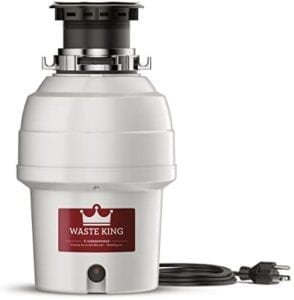
The higher the horsepower, the better ability of the garbage disposal to grind waste. The horsepower on these garbage disposals is 3/4. The 3200 and 9940 are essentially the same but the mounts are different on them.
2. InSinkErator Badger 5
The horsepower on this garbage disposal is 1/2. Through tests, it has shown that it grinds up food impeccably and does not clog up the drain. It comes pre-wired and it has a stainless steel sink flange. The price is approximately $100.

3. Moen GXB75C 3/4 HP Control Activation
The Moen GXB75C is known to be able to finely grind all the wastes put into it. It has a stainless steel sink flange, 3/4 horsepower, and is approximately $200.
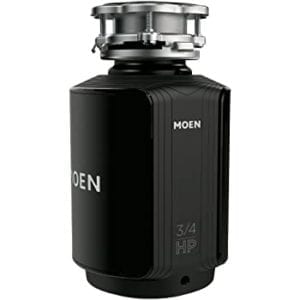
Say Bye To That Garbage Disposal Leak
Garbage disposal leaking is a problem where the solution is simple if you know where to start. Now that you know what to look for when your garbage disposal is leaking, you can isolate the problem and fix it immediately to restore the usage of your sink.
Just remember to make sure all seals and pipes are securely attached, nothing is out of place, and avoid throwing certain wastes down the drain.
Following this guide will ensure that your garbage disposal leaking comes to an end. In the case that you need new garbage disposal altogether, check out the ones listed above. Contact a plumber for a quote so you can get it installed as soon as possible.
COMPARE QUOTES NOW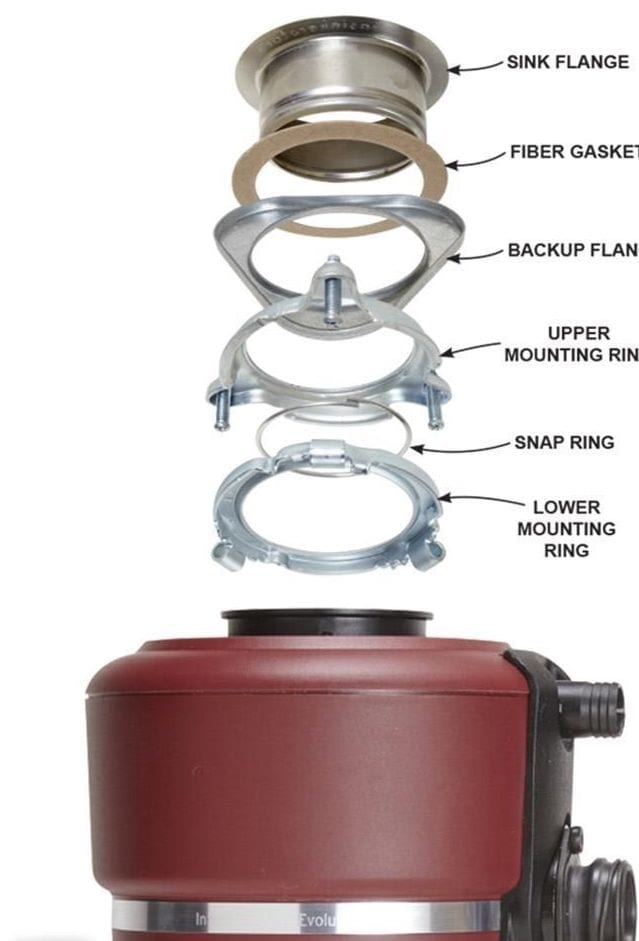
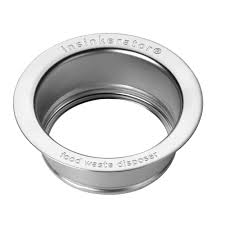
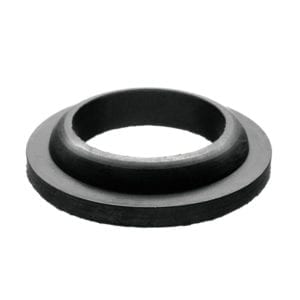
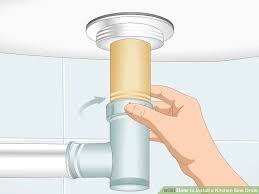
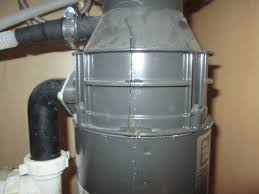

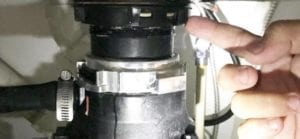

It was helpful when you explained that potato peels will clog up garbage disposal because they are thick and slimy. Last night, I was peeling a potato for dinner, and I accidentally dumped some of the skins down the drain. I don’t want to reach my hand down there to remove them, so I might hire a plumber that can remove them for me so that I don’t damage the disposal system.